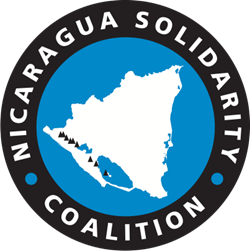
Take Action
Protest UNHRC Report
Joint Statement by organizations in the Americas, Europe and beyond on the actions by the UN Human Rights Council against Nicaragua and the Nicaraguan people
Please read the joint statement from organizations based in the Americas, Europe, and beyond which work in solidarity with Nicaragua’s Sandinista revolution and with the Nicaraguan people. The statement strongly opposes the actions taken by the UN Human Rights Council (UNHRC) in support of US regime-change plans for Nicaragua. Will you help? Read the statement and sign here.
We call on the UNHRC to withdraw the reports on the basis that they fail to meet the terms of reference set by the UNHRC.
Oppose Sanctions
Please sign petition to tell Congress NO MORE SANCTIONS on Nicaragua!
Contact your US senators and representatives.
It’s time to recognize and support Nicaragua’s achievements rather than undermine them with sanctions.
On June 8, 2023, U.S. Senators Marco Rubio (R-FL) and Tim Kaine (D-VA) introduced legislation that would extend the U.S. government’s authority to impose sanctions on Nicaragua through December 31, 2028! The bill is now in the Senate Foreign Relations Committee, with no vote taken yet – so there is time for us to take action together!
The new sanctions seek to restrict loans for economic development from the Central American Bank for Economic Integration (CABEI) which funds roads, water and energy projects, and housing in the country. The old sanctions stopped most loans from the IMF, World Bank and the IDB. Now the U.S. wants to stop the CABEI loans as well! All these restrictions should be lifted!
Visit Nicaragua
Casa Ben Linder 2025 delegations:
21-29 June 2025: Global Health Intensive
July 2025: Solidarity in Action: Nicaragua’s Popular Revolution
November 2025: Salud & Solidaridad: Hands-On Healthcare in Nicaragua
Date TBD 2025: Co-ops and Communities: Cooperative Movement in Nicaragua
Email casabenjaminlinder@gmail.com to apply



